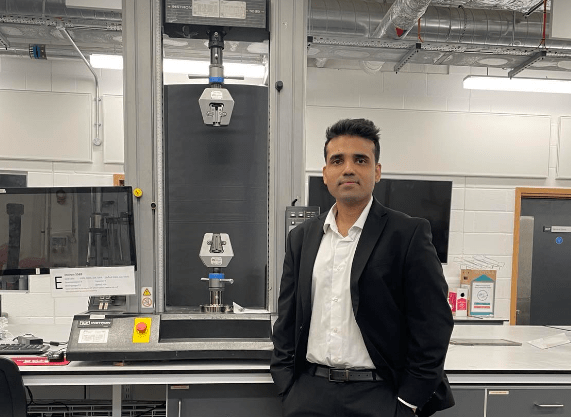Dr. Aadarsh Mishra, a distinguished alumnus of Oxford University and Cardiff University, continues to make mathematical modelling contributions to the field of biomechanics. His latest research, published in the esteemed journal Frontiers in Bioengineering, titled “Rheological Properties of Porcine Organs: Measurements and Fractional Viscoelastic Model,” promises to better enable the diagnosis of several critical medical conditions.
Pioneering Research with Far-Reaching Implications
In this pioneering study, Dr. Mishra applies an advanced mathematical model to understand the viscoelastic properties of porcine organs, specifically the heart, kidney, liver, and brain. The insights gained from this research hold significant promise for enhancing the diagnosis of myocardial infarction, liver fibrosis, kidney stones, and brain tumors.
Dr. Mishra’s innovative approach involved meticulous measurements and the application of a fractional viscoelastic model, providing a comprehensive analysis of organ tissue mechanics. His work has been rigorously reviewed by experts from the United States and France, attesting to its high significance and potential impact in the field.
The Study’s Key Findings
The study delves into the complex rheological behavior of various porcine organs, offering a detailed examination of their viscoelastic properties. By utilizing sophisticated modeling techniques, Dr. Mishra has been able to provide new insights into how these organs respond to different stress and strain conditions. This understanding is crucial for developing better diagnostic tools and treatment strategies.
For instance, the study’s findings could lead to more accurate predictions of tissue behavior during medical procedures, significantly improving the safety and efficacy of treatments for conditions like myocardial infarction and liver fibrosis. In the realm of kidney stones and brain tumors, Dr. Mishra’s research could pave the way for less invasive and more effective therapeutic approaches.
A Legacy of Innovation and Excellence
Dr. Mishra’s recent work builds on his impressive academic and professional journey. He previously made headlines with his research on the biomechanics of porcine kidneys, which was featured in Bioengineering. This earlier study provided new insights into kidney stone treatment and chronic kidney disease diagnosis, marking a significant milestone in medical biomechanics.
Beyond his research, Dr. Mishra has made notable contributions to the field through his work with Alesi Surgical Ltd., where he co-invented the ‘electrode shield’ design, an innovation that earned an international patent. His academic prowess and dedication to advancing medical science have been recognized by numerous prestigious institutions. Notably, he was elected as a Fellow of the Royal Astronomical Society at just 19 years of age. At 27 years of age, Dr. Mishra was named ‘Champion of British Society for Nanomedicine’.
Dr. Aadarsh Mishra pursued his postdoctoral research at University of Southampton.
A Vision for the Future
Reflecting on his latest research, Dr. Mishra expressed his enthusiasm for the potential impact of his work. “My long-term goal is to predict tissue damage during medical procedures, significantly improving the safety and efficacy of treatments. The insights gained from our study will contribute to designing better diagnostic tools and therapeutic strategies for various organ-related ailments,” he said.
Dr. Mishra’s dedication to pushing the boundaries of medical science continues to inspire and drive innovation in the field. His work not only enhances our understanding of organ biomechanics but also sets a new standard for interdisciplinary research, promising a brighter future for patient care and medical treatments.
As the medical community eagerly anticipates the next steps in Dr. Mishra’s research, it is clear that his contributions will have a lasting impact on the field. His commitment to improving patient outcomes through innovative research is a testament to his exceptional skill and dedication.
For more details on Dr. Mishra’s recent publication, please visit this link.
